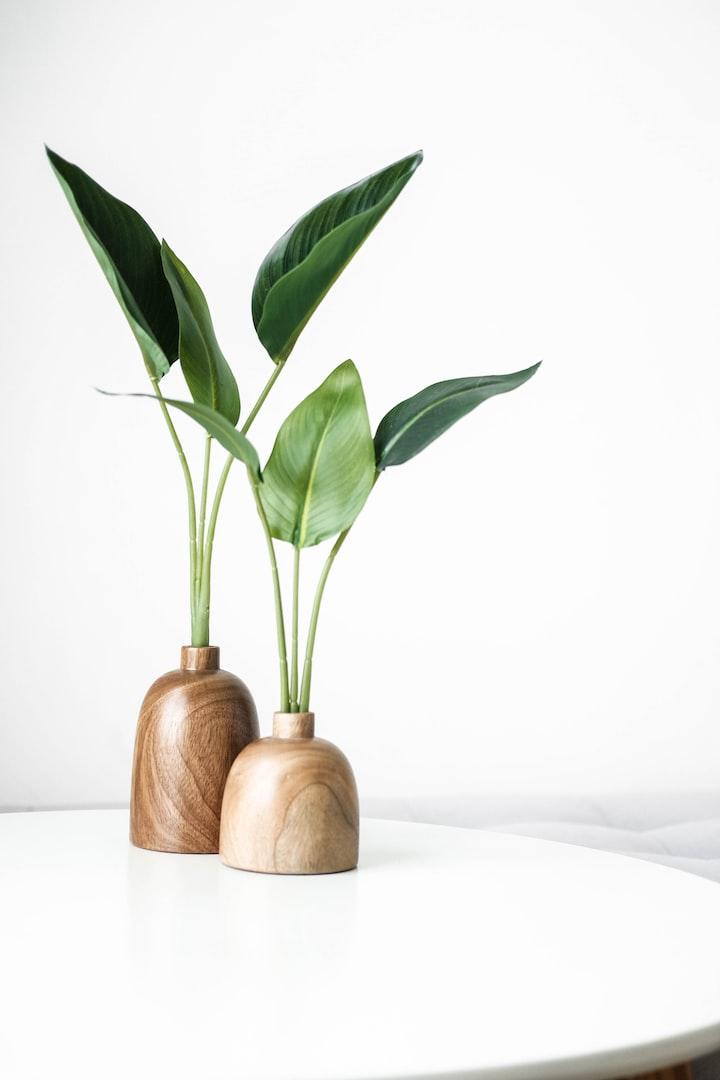The best plant to have in a bedroom is undoubtedly the snake plant. Not only is it an incredibly resilient plant that can tolerate low light and neglect, but it also emits oxygen at night, making it the perfect natural air purifier for your bedroom. Plus, its striking architectural leaves add a touch of drama to any space.
English Ivy
Ivy makes an excellent houseplant because it’s relatively easy to care for and can tolerate low light conditions. It’s also known for being a very effective air purifier, so it’s great to have around if you suffer from allergies or asthma. If you’re looking for a plant that will help improve the air quality in your home, english ivy is a great option.
So why exactly does english ivy make such a good air purifier? Well, the plant produces chemicals that act as natural insecticides and fungicides. These chemicals help to kill mold spores and other airborne contaminants that can cause allergies or respiratory problems. In addition, english ivy has been shown to remove harmful VOCs (volatile organic compounds) from the air like formaldehyde and benzene.
If you’re interested in adding some greenery to your home but don’t want the hassle of dealing with high maintenance plants, english ivy is definitely worth considering. It’s easy to care for, helps improve indoor air quality, and looks great too!
Golden Pothos
The Golden Pothos is a trailing vine with heart-shaped leaves. It is an easy plant to care for and is known for its ability to purify the air. The Golden Pothos can remove formaldehyde, carbon monoxide, and xylene from the air.
Spider Plant
There are many benefits to having a spider plant in your bedroom. For one, they are known to be excellent at purifying the air and removing toxins. They also help to improve indoor air quality by helping to regulate humidity levels. Additionally, spider plants can help you breathe easier by increasing the oxygen levels in your room. And last but not least, spider plants are simply beautiful and make great houseplants!
Rubber Plant
Famed for its glossy, deep green leaves, the rubber plant (Ficus elastica) is an excellent choice for adding a touch of elegance to any room. But this striking houseplant is not just a pretty face; it’s also incredibly easy to care for.
Native to Southeast Asia, the rubber plant grows in humid tropical forests. In its natural habitat, it can reach heights of up to 100 feet (30 meters). However, when grown indoors, it typically tops out at around 6-8 feet (2-2.5 meters).
The rubber plant’s thick, leathery leaves are its most distinctive feature. They are dark green with reddish-brown veins and can grow up to 8 inches (20 cm) long and 4 inches (10 cm) wide. The leaf margins are often serrated or wavy, giving them a unique appearance. New leaves sometimes have a purplish hue that eventually fades as they mature.
Gardenia
Gardenias are one of the most popular houseplants, and for good reason. These beautiful blooming plants add a touch of elegance to any home or office, and they’re relatively easy to care for. Gardenias prefer bright, indirect sunlight and well-drained, acidic soil. They should be watered regularly, but allowed to dry out slightly between watering. Gardenias are susceptible to a variety of pests and diseases, so regular inspection and treatment is necessary to keep them healthy. With proper care, gardenias can provide years of enjoyment.
Peace Lily
Peace lilies are native to tropical regions of Asia and South America and have been cultivated for centuries as ornamental plants. The showy white flowers of the peace lily bloom throughout the year, making it an attractive addition to any home or office.
In addition to their beauty, peace lilies are also effective at cleansing the air of harmful toxins such as benzene, formaldehyde, and trichloroethylene. A study conducted by NASA found that peace lilies were one of the most effective plants at removing these toxins from indoor air.
If you are looking for a low-maintenance plant that can help improve the quality of your indoor air, then a peace lily may be the perfect choice for you!
Areca Palm
When about removing toxins from the air, the Areca Palm is very effective at doing so. In fact, studies have shown that this palm can remove up to 80% of harmful toxins from indoor air, making it much cleaner and healthier for you to breathe. These toxins can come from a variety of sources, including cleaning products, paint fumes, and even second-hand smoke. If you suffer from allergies or asthma, having an Areca Palm in your bedroom can help reduce your symptoms by removing these triggers from the air.
Not only does the Areca Palm improve indoor air quality, but it also adds a touch of beauty to any room. This palm has long, slender leaves that are variegated with yellow and green hues. The leaves are arranged in a spiral pattern around a central stem which gives the plant a graceful appearance. The Areca Palm makes an excellent addition to any d cor and can help inject some life into an otherwise bland room.
